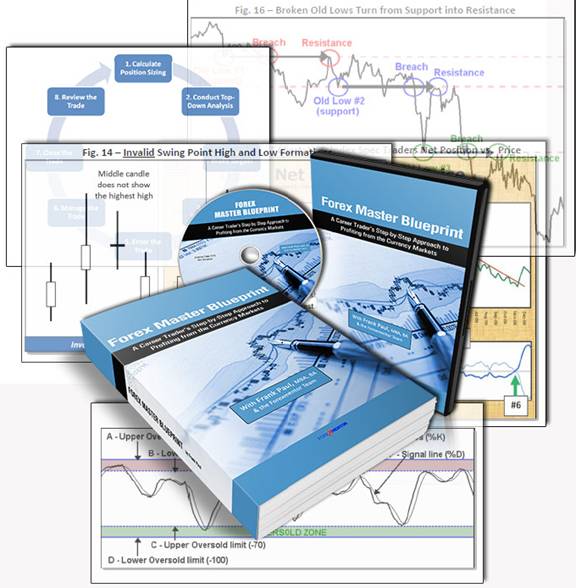Forex Trading Articles
TICK VOLUME
By Dick Thompson for Forexmentor
©2011, Forexmentor.com, February 2011
Those of us who have watched stock charts in the past are familiar with the ubiquitous volume bars along the bottom of the chart. For every price bar in the upper part of the chart, there is a corresponding volume bar. Heavy volume during a price move is shown by a tall bar and light volume by a short bar. Volume has also found its way into a number of indicators that are used
to technically analyze stock movement; Granville's On-Balance Volume, Volume Price Trend Indicator, Accumulation/Distribution Line, and Elder's Force Index are four of the more popular ones.
Volume has historically been a major factor in determining the strength or weakness of a trend in stock movement. When a stock is trending up, heavy volume indicates buying pressure. If the uptrend is healthy, this is usually accompanied with light volume when prices pull back, or retrace. And when volume becomes heavy in those corrections, the analyst concludes that caution is advised as the trend is becoming weaker and may be coming to an end.
In the Forex market, volume is not commonly shown on our price charts. It is generally not a factor in our analysis. We just do not have information on the size of orders or how many buyers or sellers are behind a movement in a currency pair.
In the equities markets, as well as the futures and bond markets, trading is done through a central exchange where all transactions are processed. As all trades ultimately move through a central point, it is possible to calculate the volume since the size of all orders during a given time can be tracked and summed. This is not so in the Forex spot market. There is no one central exchange and therefore order size is not available in one place for data processing. Each bank that trades in the Forex market will know the volume flow through their offices but since no-one gathers that data from all the banks or brokerages, no-one really knows the total volume traded in any period of time; at least in anything that approaches real time.
Since volume is so important, is there any way that we can get some visibility to aid our analysis in Forex trading? The answer is a qualified yes. It comes in a measurement called Tick Volume.
Tick volume is the sum of the number of times that price moves, the number of changes in price regardless of volume, during a given time period. That time period, like a candle on a price chart, is based on the chart's time frame. If we are looking at tick volume on a 15 minute chart, the size of the tick is the number of price changes in 15 minutes.
The number of price changes is important because as markets become more active, prices change back and forth more often and each change contributes to the tick volume. Still, that price change does not contain any volume data; a single price change of one pip may contain 5 mini lots or it might contain 50,000 standard lots, it is still counted as one change in tick volume. For this reason, using tick volume can only be thought of as a proxy for real transaction volume.
But what tick volume does tell you is the amount of activity going through the market. The Forex market has a normal daily pattern of activity - it is the breathing of the market. That generally amounts to low volume in Asia, large volume in London, lulls before news releases, and medium volume in the US. That's a normal day. Any deviation to this is something to take note of. Tick volume may also shows you a sudden burst in the tick rate at a key level that can indicate that price has run into an area thick with take take-profit orders, or stops, and this might temporarily cause the market to pause until all these orders have gone through, what we sometimes refer to as "chopping wood". Also you can see when a move is dying as all the volume begins to slow down, and it also gives clues when the market is just in a directionless drift.
You might be interested in taking a look at tick volume if it is available on your trading platform. Not all platforms collect this data but the popular MT4 platforms have a generic indicator called simply Volume which displays tick volume as bars, just as is done on Equity charts. You will have to check your platform. Some other indicators that depend on volume are also available, such as the Elder Force Index. Frank Paul has recently presented a number of AM Reviews showing us a trading methodology that he calls the Force-3 Trade, making use of this indicator.
As important as volume has been historically in the trading world, I am surprised that more attention has not been paid to tick volume as a proxy for true volume. There are certainly nay-sayers making their opinions known on the web, but there are also many who have tried using tick volume and have reported that it does work. I think it is worth a serious look.
Index of All Forex Trading Articles

|
|
